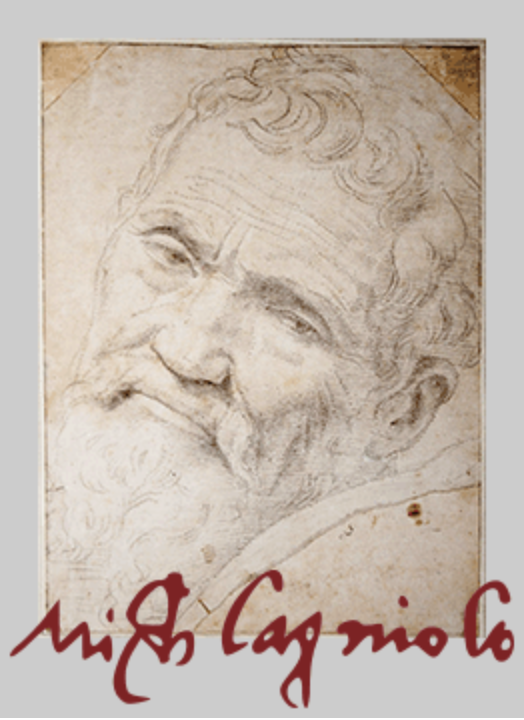Michelangelo
Michelangelo di Lodovico Buonarroti Simoni

Michelangelo is widely considered the greatest artistic genius that ever lived — a man whose name has become synonymous with the word “masterpiece.” He was born Michelangelo di Lodovico Buonarroti Simoni at Caprese, Italy and grew up in Florence, home of the Italian High Renaissance. It was here that he received his education under the patronage of the de Medici family. His works include the world famous sculptures of “David” and the Pietà as well as the breathtaking frescoes on the ceiling of the Sistine Chapel.
As an artist he was unmatched, the creator of works of sublime beauty that express the full breadth of the human condition. He left immortal works in sculpture, painting, architecture and poetry and through this vast and multifaceted body of artistic achievement, Michelangelo made an indelible imprint on the Western imagination. No other artist has ever attained such a high level of mastery in all four of these areas of artistic endeavor.
IVINE INSPIRATION
He was born Michelangelo di Lodovico Buonarroti Simoni at Caprese, Italy. Raised in Florence, home of the Italian High Renaissance, he received his education under the patronage of the de Medici family.
As an artist Michelangelo was unmatched, the creator of works of sublime beauty that express the full breadth of the human condition. He left immortal works in sculpture, painting, architecture and poetry, and through this vast and multifaceted body of artistic achievement, Michelangelo left an indelible imprint on the Western imagination.
THE SEARCH FOR GOD IN BEAUTY AND BEAUTY IN GOD
Michelangelo was a deeply spiritual man and believed that his art was divinely inspired. To Michelangelo, the artist’s tools and his stone are instruments of the divine will and the creative process an aspect of salvation. The concept of genius as Divine inspiration, a superhuman power granted to a few rare individuals and acting through them, is nowhere more fully exemplified than in his life and work.
Michelangelo’s search for God, whose sublime purpose he saw revealed in the beauty of the human form and his disinterest in any subject save the human form, which he held to be the supreme vehicle of expression, led him to an intense and exhaustive study of the human body.
Michelangelo studied the human form and he studied the ancient sculptors who knew best how to represent the human body in motion, with all its muscles and sinews. Not content with learning the laws of anatomy secondhand, he made his own research into human anatomy, dissecting bodies and drawing from models until the human figure did not seem to hold any secrets for him.
